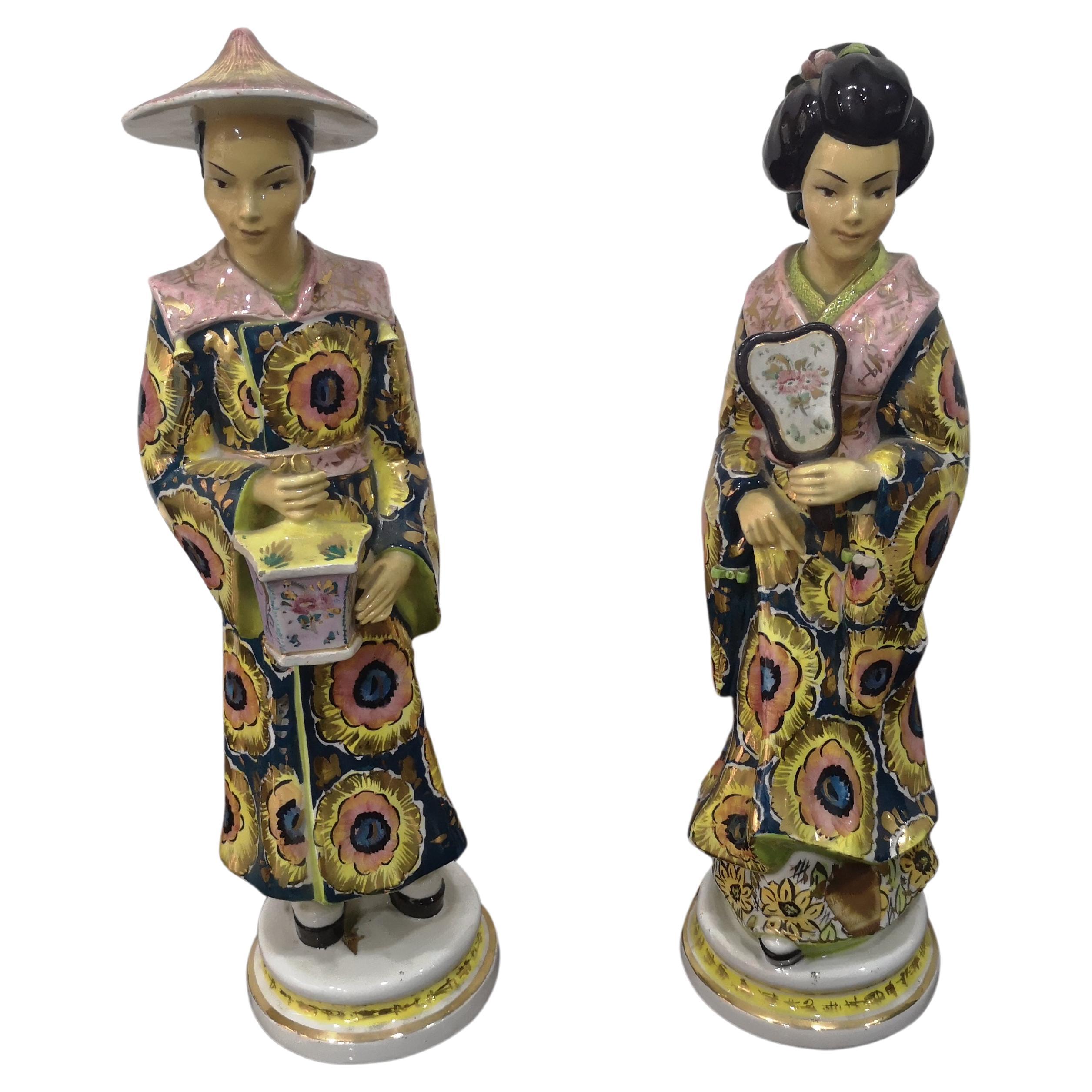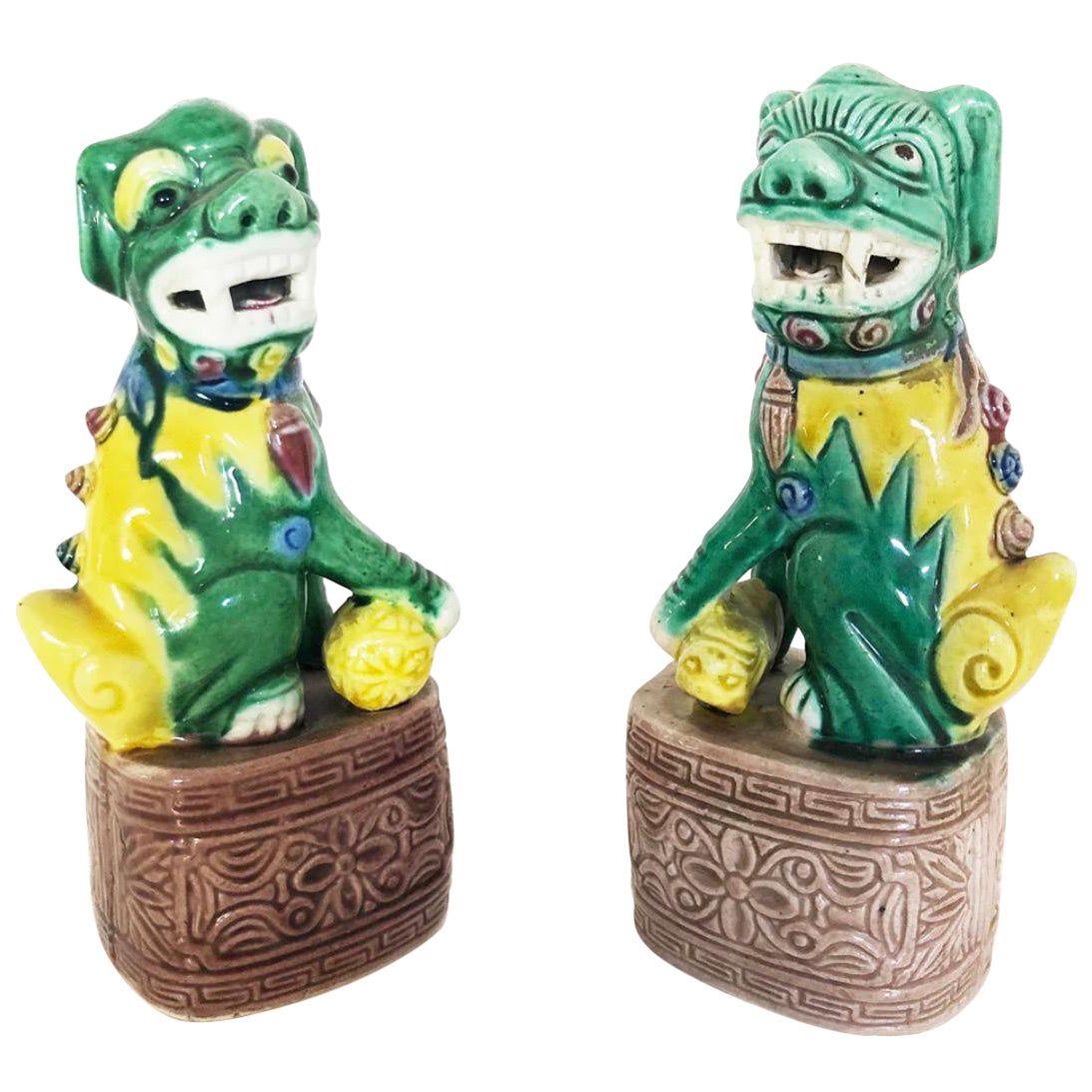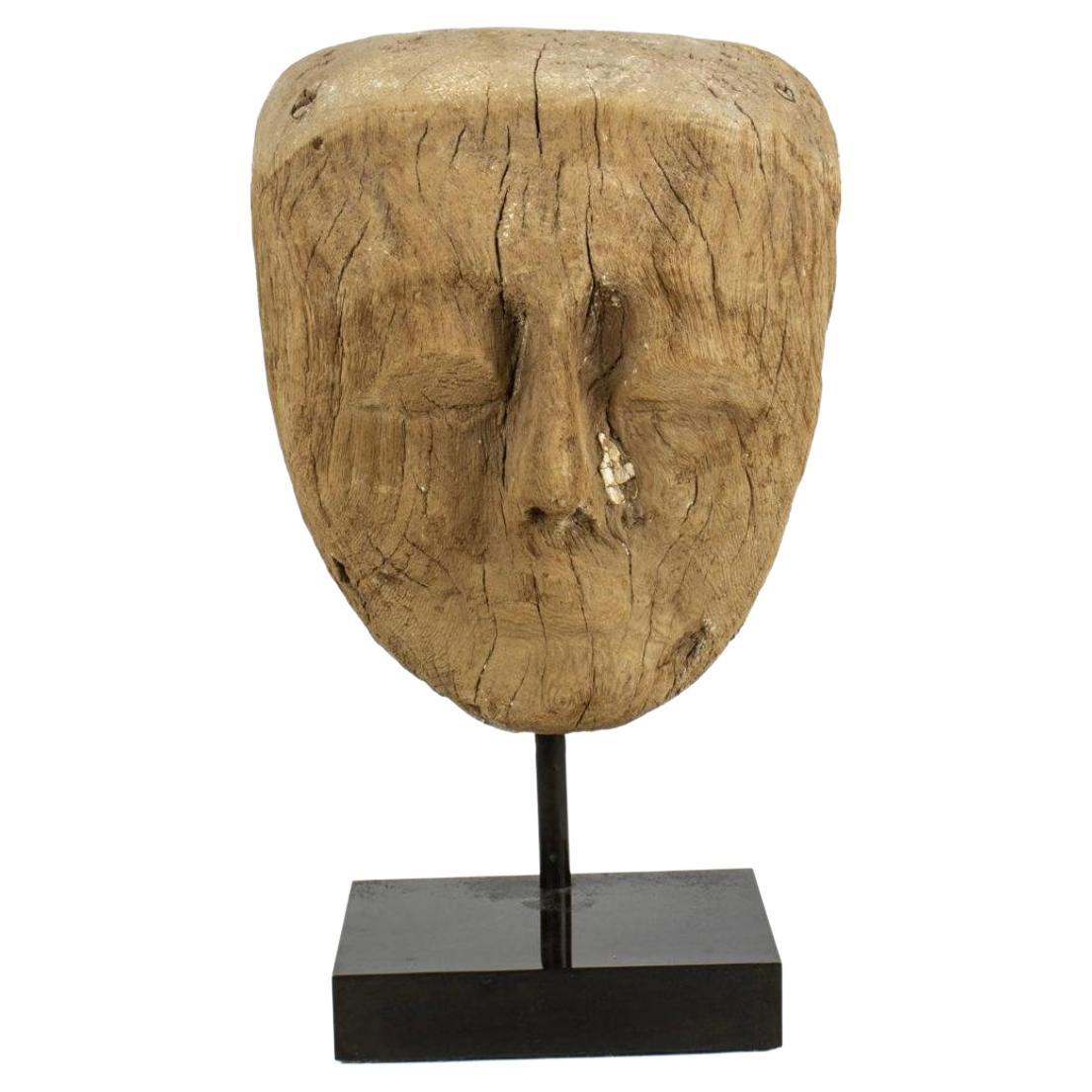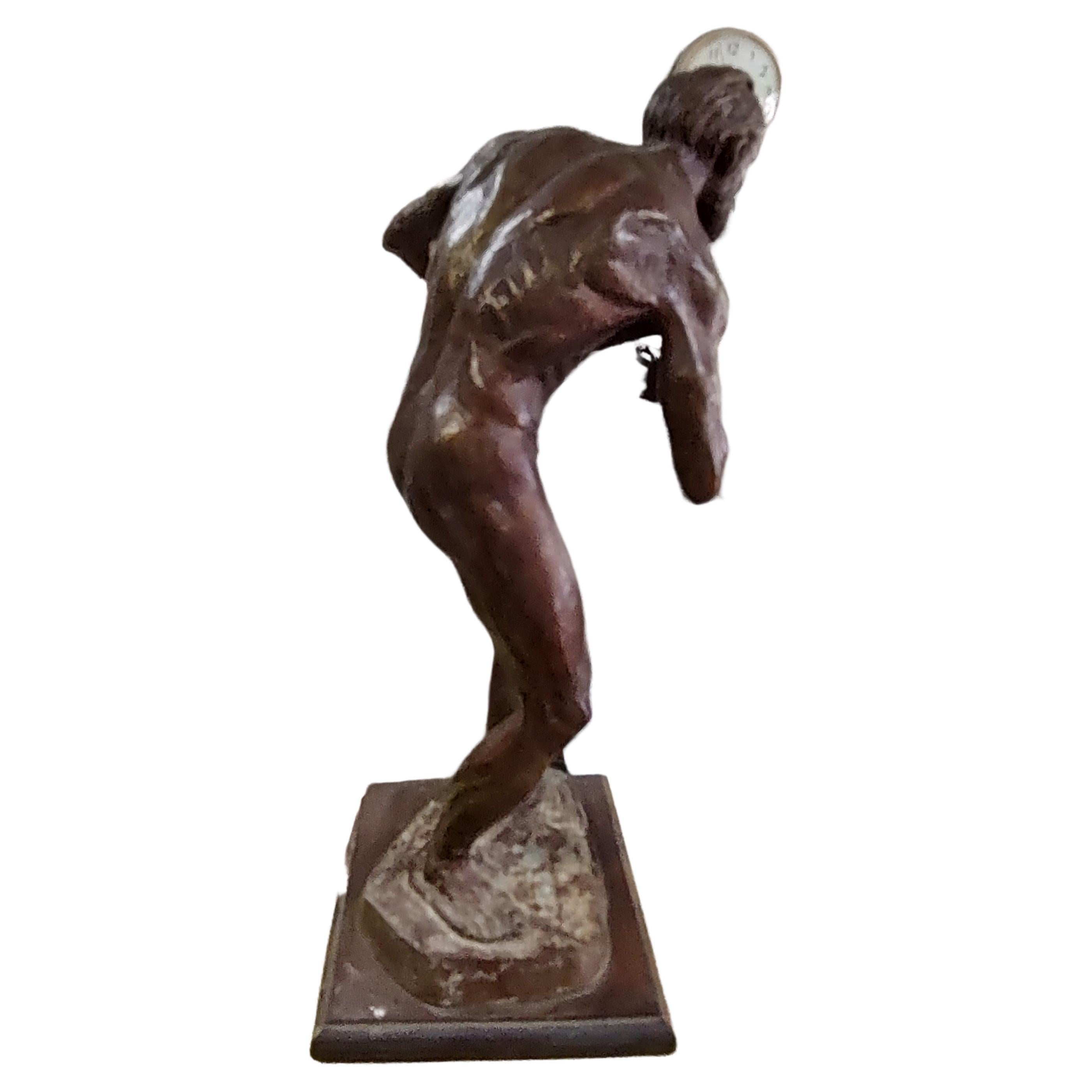Items Similar to Manteña Chair of Power Cachique of Prehispanic Ecuador 900 AD
Want more images or videos?
Request additional images or videos from the seller
1 of 17
Manteña Chair of Power Cachique of Prehispanic Ecuador 900 AD
About the Item
MANTEÑA CHAIR OF POWER CACHIQUE OF PREHISPANIC ECUADOR
The chair has been carved from a block of
detrital sedimentary rock, in which fossil remains can be seen. It is a calcarenite or
dark brownish-yellow, porous, coarse-grained calcareous sandstone.
These stone chairs are usually classified according to the iconographic motif carved in
the support of the seat, dividing mainly into two groups, anthropomorphic and zoomorphic
–or zooanthropomorphic, since they represent variations that combine animal traits, generally felines, with the human being– Our chair corresponds to the second type, with a pedestal in the shape of a zoomorphic feline.
The feline is represented crouching, flexing arms and legs knees and elbows. The upper part of the chair – the ‘U’ shaped seat – is superimposed on the
back, head and shoulders of the figure. The way to place the seat on the full body
marks the difference between this specimen and others also anthropomorphic, in which said seat is
load only on the head, arranging an intermediate padding element carved between
the seat and back of the figure. As a consequence, in this case the head remains embedded and
sunk between two powerful shoulders that protrude with rounded shapes at the same height
than that one
In these sculptures, more attention has been paid to the face than to the rest of the morphology.
of the body, so the figure does not usually keep anatomical proportionality. does not seem to exist
nor is it a stable rule when it comes to placing the seat on the figure, some are more
back than others on the back of the character that supports it, and the depth of the seat is also
quite variable. Of course, what characterizes the seat is the 'U' shape, and that most of
the chairs have horizontal lateral extensions at the ends of these arms,
forming a right angle. These extensions have been interpreted as armrests. In general,
In addition, the shape of the 'U' is wider at the base and narrows towards the upper end,
as can be seen in the profile of this chair
The chairs in the context of the Manteño-Huancavilca culture
The Manteño-Huancavilca culture developed on the south-central coast of Ecuador, between the Bay of
Caráquez and the island of Puná10, during the Integration period . Saville to
early 20th century, Jijón y Caamaño (1997), Bushnell (1951) or Emilio Estrada (1957, 1962), among
others, are outlining through some initial archaeological excavations the features that define
to this culture. In it, two groups are differentiated, the manteños to the north and the huancavilcas to the south,
with certain common cultural traits and other particular or differentiating ones. And among the latter
precisely the use of carved stone as a feature of the Manteños stands out -the group
from the north–, to whom therefore the so-called chairs belong. To this could be added
characteristic of the north the iconography of the feline, the abundance of figurines and graters or the burial
compared to burial in urns, more typical of the huancavilcas.
As suggested by McEwan , the chairs with feline images correspond to religious power.
Title: Chair of power.
Object: Ceremonial chair carved in sandstone, with a 'U'-shaped seat, supported by a crouching ZOOMORPHIC figure.
Typology: Lithic sculpture.
Culture: Manteña (Manabi, Ecuador).
Dimensions: 38X38X20CM
Technique: Carving on stone block, sawn with cord.
Material: Mixed sandstone, of medium and coarse sand, with inclusions of bioclast shells
Use/Function: Ritual, ceremonial.
Provenance: Collection Dr. Professor: Udo Oberem
(1923-1986)
On November 24, 1986, Udo Oberem died suddenly and unexpectedly in Bonn, just before his 63rd birthday. The deceased was a number professor of ethnology — with special regard for
Americanist studies („Alt-Amerikanistik") - at the Faculty of Philosophy of the University of Bonn and director of the Institute of Anthropology
Cultural.
Biography: Manteña chairs from pre-Hispanic Ecuador
Study, restoration and analysis of a chair
stone in the Museum of America
Andrés Gutiérrez Usillos (scientific editor)
Museum of America. Ministry of Education, Culture and Sport.
- Dimensions:Height: 14.97 in (38 cm)Width: 7.88 in (20 cm)Depth: 14.97 in (38 cm)
- Materials and Techniques:
- Period:
- Date of Manufacture:900
- Condition:
- Seller Location:Madrid, ES
- Reference Number:1stDibs: LU5779235226972
About the Seller
4.9
Platinum Seller
These expertly vetted sellers are 1stDibs' most experienced sellers and are rated highest by our customers.
Established in 2005
1stDibs seller since 2021
222 sales on 1stDibs
Typical response time: <1 hour
- ShippingRetrieving quote...Ships From: Madrid, Spain
- Return PolicyA return for this item may be initiated within 14 days of delivery.
More From This SellerView All
- Manteña Chair of Power Cachique of Prehispanic Ecuador 900 ADLocated in Madrid, ESThe chair has been carved from a block of rock These stone chairs are usually classified according to the iconographic motif carved in the support of the seat, dividing mainly into t...Category
Antique 15th Century and Earlier Religious Items
MaterialsStone
- Antinous 'Bitnia 130, Alexandria, Egypt 150 AD the Favorite of Publius ElioBy Europa AntiquesLocated in Madrid, ESAntinous (Bitnia130 - Alexandria, Egypt 150 AD), the favorite of Publius Elio Adriano early 20th century. reproduction in terracotta follows the original of the National Archaeologi...Category
Early 20th Century Italian Modern Busts
MaterialsTerracotta
- Antinous 'Bitnia 130, Alexandria of Egypt 150 Ad' Sculpture, Early 20th CenturyBy Europa AntiquesLocated in Madrid, ESAntinoo with marble base. Terracotta head with marble base. Italy Antinous (Bitnia 130 - Alexandria of Egypt 150 AD). Publio's favorite Elio Adriano. Mesaures: height 33 cm. width ...Category
Early 20th Century Italian Modern Busts
MaterialsTerracotta
- Amazing "Minotaur of the Labyrinth of Crete"By Europa AntiquesLocated in Madrid, ESAmazing Italian "Minotaur of the Labyrinth of Crete". 20th century. carrara marble. Measures : height: 206 cm. width : 65 cm. depth : 51 cm. weight : 240 kg. head Size : 43 cm x 39 c...Category
20th Century Italian Baroque Figurative Sculptures
MaterialsMarble
- Terracotta Head of the Dying Warrior of the Frontons of Egina Late 19th CenturyBy Europa AntiquesLocated in Madrid, ESTerracotta head of the dying warrior of the frontons of Egina late 19th century Italy Measures: Height 23 cm Width 25 cm Length 33 cm Weight 5 kg Historical period between 500 and 48...Category
Antique Late 19th Century Italian Modern Busts
MaterialsTerracotta
- Pair of Spanish Spiral Columns of the 17th CenturyLocated in Madrid, ESPair of Spanish spiral columns of the 17th century in carved and gilded wood, decorated with plant elements, vines, bunches of grapes and bird...Category
Antique 17th Century Spanish Baroque Abstract Sculptures
MaterialsWood
You May Also Like
- Pair of porcelain figurines H 42 cm early 900sLocated in Catania, ITPair of oriental porcelain figurines of excellent workmanship early 1900s in very good condition with no imperfections. The figurines measure: Height cm 42/43 Width at the base 12 cmCategory
Vintage 1930s Italian Figurative Sculptures
MaterialsPorcelain
- Fo's Dogs Pair of Hand Decorated Ceramics' 900, AntiquesLocated in Foggia, FGCani di Fo Coppia Ceramiche Decorate a mano '900 -Antiques- Anno: 1900 circa Condizioni: Eccellenti Misure: Cm 15 h x cm 6 base Storia: In realtà sono dei leoni, In Cina, loro paese di origine, sono chiamati shi, che significa “leone” o shishi, che significa “leone di pietra”. Assomigliano sia alla razza Chow Chow...Category
Antique Early 1900s Figurative Sculptures
MaterialsCeramic
- Ancient Egyptian Mask, 900-600 BCELocated in Doylestown, PAAn ancient burial mask that was created to adorn a sarcophagus, 26th Dynasty, Minia, Mid-Upper Nile, circa 900-600BCE, from the collection of Joanna Barnes and Jack Warner, (Warner B...Category
Antique 15th Century and Earlier Egyptian Egyptian Mounted Objects
MaterialsWood
- Songye power figure NkisiLocated in London, GBSongye Power Figure NKISI Provenance: - Private collection, London, United Kingdom Songye Power Sculpture Like the Kongo and other related Bantu cul...Category
20th Century Congolese Tribal Art
MaterialsRaffia, Wood
- Maya Redware Turtle Bowl, c. 600-900 ADLocated in Chicago, ILExhibiting a rich patina, this petite redware bowl is attributed to Maya culture and shows many telltale signs of Pre-Columbian pottery. Speckled with imp...Category
Antique 15th Century and Earlier Central American Pre-Columbian Decorati...
MaterialsCeramic
- Mid Century Bronze Sculpture of a Man by Michael Shacham "Power of Tyranny"Located in Port Jervis, NYFabulous and elegant in it's sheer size and power, 29.25 inches tall. Michael Shacham is a prolific sculptor and artist born in 1938 and has been a cre...Category
Vintage 1970s American Modern Figurative Sculptures
MaterialsBronze
Recently Viewed
View AllMore Ways To Browse
Horse Statuary
Vintage Polar Bear Figurine
Vintage Metal Toy Horse
Iron Bottle Opener
Vintage Panther Statue
Vintage Porcelain Pig
Vintage Porcelain Pigs
Fish Sculpture In Crystal Glass
Horse Ceramic Bitossi
Murano Puppy
Buccellati Feather
Faux Turtle Shell
Vintage Pheasant Figurine
Vintage Pheasant Figurines
Vintage Scotty Dog
Lladro Group
Vintage Piggy Bank Ceramic
Vintage Pig Figurine





